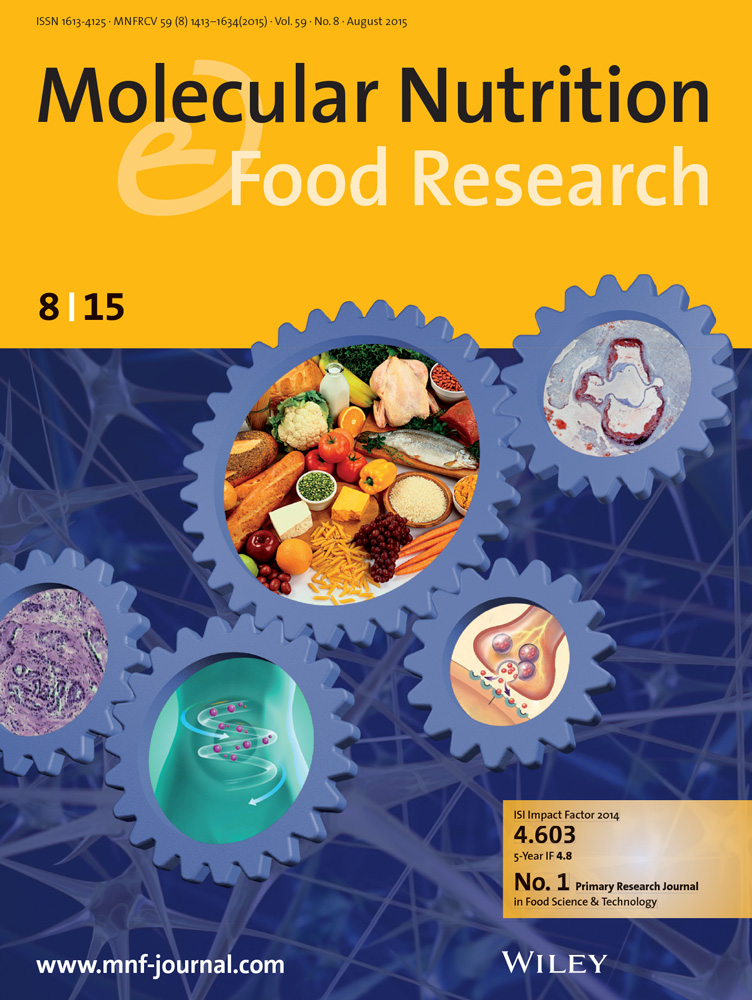血浆代谢物谱与柳叶刀饮食和炎症性肠病风险相关:来自英国生物银行的前瞻性队列研究
IF 4.5
2区 农林科学
Q1 FOOD SCIENCE & TECHNOLOGY
引用次数: 0
摘要
EAT-Lancet委员会建议可持续的、注重健康的饮食,但其对炎症性肠病(IBD)和代谢机制的影响尚不清楚。这项研究探讨了EAT-Lancet饮食与IBD风险之间的关系。我们纳入了187558名来自英国生物银行的参与者,他们在基线时没有IBD。使用经过验证的24小时饮食回忆来评估饮食摄入量,并计算EAT-Lancet饮食评分。通过初级保健、医院数据和死亡登记确定IBD事件病例。Cox比例风险模型用于估计风险比(hr)和95%置信区间(ci)。在平均13.15年的随访中,记录了571例克罗恩病(CD)和1066例溃疡性结肠炎(UC)。EAT-Lancet评分每增加1点,IBD的hr为0.95 (95% CI: 0.91-0.98), UC的hr为0.95 (95% CI: 0.91-1.00), CD的hr为0.93 (95% CI: 0.87-0.98)。7种代谢物被确定为介质,占关联的10.7%。更坚持EAT-Lancet饮食与IBD风险降低的趋势相关,已确定的代谢物介导了这种关联。这些发现强调了EAT-Lancet饮食在降低IBD风险方面的营养相关性。本文章由计算机程序翻译,如有差异,请以英文原文为准。

Plasma Metabolite Profiles Linked to EAT-Lancet Diet and Risk of Inflammatory Bowel Disease: A Prospective Cohort Study From UK Biobank
The EAT-Lancet Commission recommends a sustainable, health-focused diet, but its impact on inflammatory bowel disease (IBD) and metabolic mechanisms remains unclear. This study explores the association between the EAT-Lancet diet and IBD risk. We included 187 558 participants from the UK Biobank, free from IBD at baseline. Dietary intake was assessed using a validated 24-h dietary recall, and an EAT-Lancet diet score was calculated. Incident IBD cases were identified through primary care, hospital data, and death registries. Cox proportional hazards models were used to estimate hazard ratios (HRs) and 95% confidence intervals (CIs). Over a mean follow-up of 13.15 years, 571 cases of Crohn's disease (CD) and 1066 of ulcerative colitis (UC) were recorded. HRs per 1-point increase in the EAT-Lancet score were 0.95 (95% CI: 0.91–0.98) for IBD, 0.95 (95% CI: 0.91–1.00) for UC, and 0.93 (95% CI: 0.87–0.98) for CD. Seven metabolites were identified as mediators, accounting for 10.7% of the association. Greater adherence to the EAT-Lancet diet was associated with a trend toward reduced IBD risk, with identified metabolites mediating this association. These findings emphasize the nutritional relevance of the EAT-Lancet diet in reducing IBD risk.
求助全文
通过发布文献求助,成功后即可免费获取论文全文。
去求助
来源期刊

Molecular Nutrition & Food Research
工程技术-食品科技
CiteScore
8.70
自引率
1.90%
发文量
250
审稿时长
1.7 months
期刊介绍:
Molecular Nutrition & Food Research is a primary research journal devoted to health, safety and all aspects of molecular nutrition such as nutritional biochemistry, nutrigenomics and metabolomics aiming to link the information arising from related disciplines:
Bioactivity: Nutritional and medical effects of food constituents including bioavailability and kinetics.
Immunology: Understanding the interactions of food and the immune system.
Microbiology: Food spoilage, food pathogens, chemical and physical approaches of fermented foods and novel microbial processes.
Chemistry: Isolation and analysis of bioactive food ingredients while considering environmental aspects.
 求助内容:
求助内容: 应助结果提醒方式:
应助结果提醒方式:


